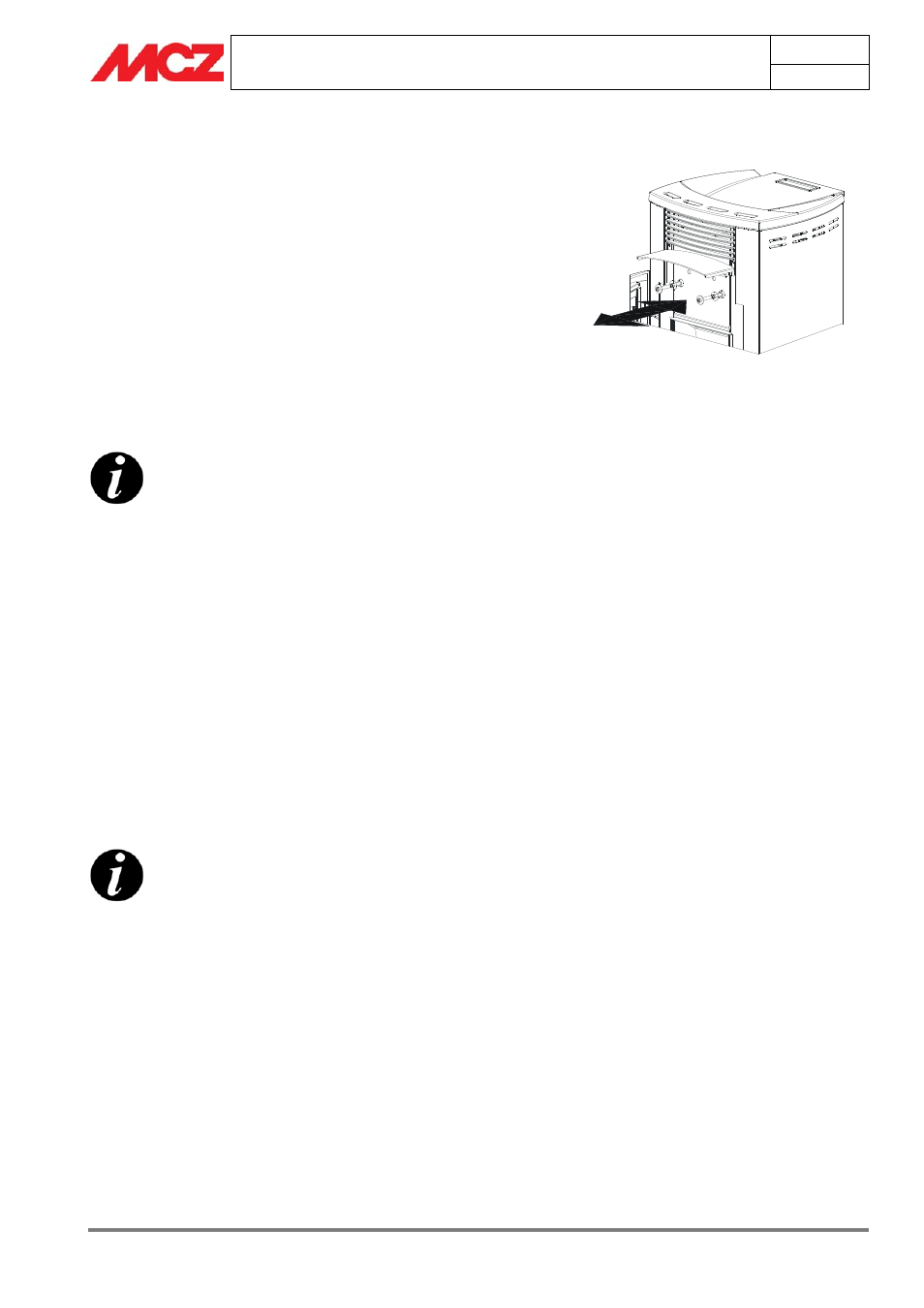Cleaning the heat exchanger and the pipe unit, Cleaning of painted parts – MCZ Athos HYDRO 14 kW User Manual
Page 56

PELLET STOVES
Chapter 5
INSTALLATION AND USE MANUAL
page
56
Maintenance and cleaning
Technical service - Rights reserved MCZ S.p.A. - Reproduction prohibited
5.1.4. Cleaning the heat exchanger and the pipe unit
The cleaning of the heat exchanger and the pipe unit is very important
to ensure constantly high performance and heat yield of the stove, as
ensured by MCZ.
It is therefore advisable to:
Every 30 days, with the stove cold, clean the inner walls of the
steel firebox, especially the back, with a scraper, to eliminate
encrustations caused by soot. Incrustations act as insulation. The
thicker they are, the less heat is transferred to the water and the
structure in general.
Every 7 days and with the stove cold clean the internal pipe unit.
To do this, use slight force on the handle located behind the door
above the fire door (behind the upper front ceramic). Push and pull the
handle 5-6 times so that the internal scraper removes the soot
deposited on the pipes.
Figure 5
Constant cleaning of the pipe unit prevents
incrustations on it, and keeps the cleaning device
from clogging and jamming.
5.1.5. Cleaning of stainless steel and satin-finish surfaces
Normally these surfaces do not need to be treated, but if they do, avoid
cleaning them with abrasive materials. For surfaces in stainless and
satin brushed steel we recommend cleaning with a paper towel or a
clean dry cloth moistened with a detergent based on non-ionic
surfactants (< 5%). A spray glass cleaner may be used.
5.1.6. Cleaning of painted parts
Do not clean the painted parts with wet rags when the unit is in
operation or hot to prevent thermal shock to the paint which may cause
it to detach. Do not use abrasive or aggressive products or materials.
Clean with damp cotton or paper towels.
The silicon paints used on MCZ products possess technical
characteristics that make them resistant to very high
temperatures.
There is however a physical limit (380°-400°) beyond which
the paint begins to fade or (over 450°) to vitrify; it may then
flake and detach from the steel surface.
If this happens, it means that temperatures have been
reached that are far above those at which the unit should
operate properly.
Figure 5 - Cleaning of internal pipe unit with scraper
